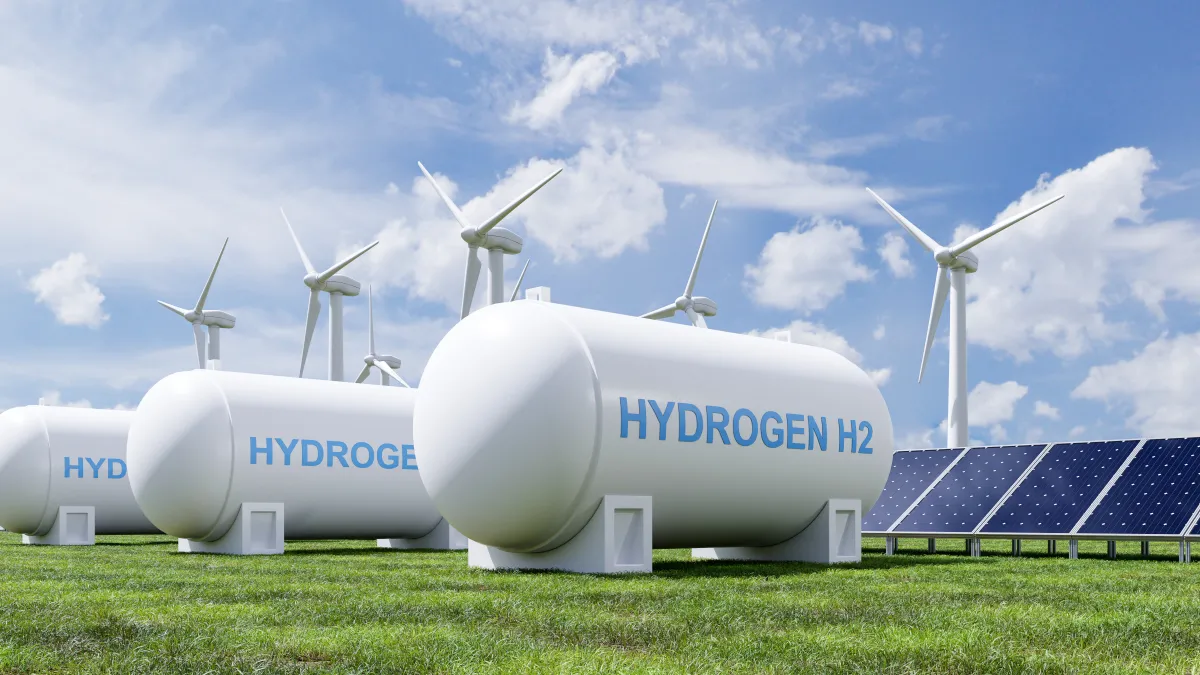Dive Brief:
- Duke Energy has announced plans to produce, store and use green hydrogen on-site at an existing gas power plant in Volusia County, Florida.
- The pilot project will use an existing solar farm co-located at the DeBary power plant to run electrolyzers and generate green hydrogen. Storage facilities to be installed at the site by 2024 will hold the hydrogen for use in the DeBary plant during hours of peak electrical demand.
- Although relatively small, the project should help Duke Energy understand how best to incorporate green hydrogen into its decarbonization plans, which include a vision to convert existing natural gas plants to hydrogen fuel beginning in the 2040s, according to Clift Pompée, managing director of generation technology at Duke Energy.
Dive Insight:
Although Duke Energy wasn't selected for participation in one of the DOE's seven hydrogen hubs, , Pompée said the company sees no reason to wait to begin experimenting with its own hydrogen production.
The utility announced plans last week to upgrade one of the four GE 7E gas turbines at the DeBary plant to operate on 100% hydrogen fuel in order to run an experiment in end-to-end hydrogen production and use. Although relatively small scale — the project will draw power from a 74.5 MW solar array to run two 1 MW electrolyzer units to be installed at the DeBary plant — the DeBary Hydrogen Project will represent Duke Energy's first experiment with both generating hydrogen and with operating a 100% hydrogen-fired turbine. Its anticipated 2024 completion date could also make it one of the first projects of its kind in the nation.
Duke Energy's interest in green hydrogen comes from a fuel diversity perspective, Pompée said, but the company also sees promise in the fuel's ability serve as seasonal energy storage. With the DeBary project, the company plans to use solar power generated during peak production hours — power that might otherwise be curtailed — to make hydrogen for use as needed during periods of increased demand.
But while the utility understands in theory how this end-to-end system could work, Pompée said the pilot system would help Duke Energy fine-tune details such as how long it takes to turn electrolyzers on or off in response to changes on the grid.
Plans for the project have been in the works for at least three years — predating both the Inflation Reduction Act and the Bipartisan Infrastructure Law. Pompée said Duke Energy wanted to become an early adopter of green hydrogen to ensure the utility sector would not lose ground to other industries vying to get ahead in hydrogen, and to give the company time to experiment with the fuel before it begins converting gas plants on a broader scale.
And although they didn't anticipate the creation of federal tax credits for hydrogen when they began planning the project, Pompée said the 45V incentives from the IRA should make the economics of end-to-end hydrogen production “very favorable.”














